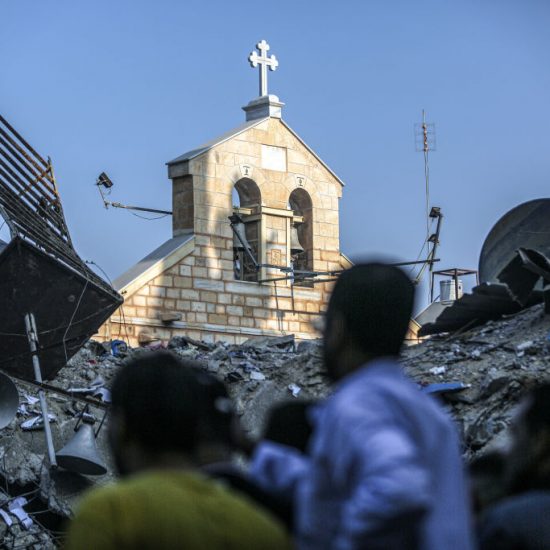The Church of St. Porphyrius, a famed structure in Gaza that is thought to be the world’s third-oldest church, was struck by an Israeli missile that did not detonate on July 29. This is the second strike suffered the historic structure has weathered since October 7, and once again, it sustained damage but avoided destruction altogether.
One person was seriously injured in the strike, and two others were injured in minor ways, Emad Wafa El-Sayegh, chairman of the board of directors of Gaza’s Young Men’s Christian Association told the Art Newspaper. El-Sayegh, along with his family, were reportedly taking shelter in the church.
Related Articles

A post on the church’s Facebook page confirmed El-Sayegh’s account and added that there were no fatalities. The shell collapsed two walls on the upper floors of the church and an adjacent dining room where displaced people had sheltered.
The World Council of Churches (WCC), to which Saint Porphyrius belongs, decried the structure’s targeting in a statement published on July 31. The missile strike came days after a rocket strike on the town of Majdal Shams, in the Israeli-controlled Golan Heights, which killed 12 members of its ethnic Druze community. Israel has accused Hezbollah of firing the rocket from Lebanon. Hezbollah has denied involvement, however the deadly incident has exacerbated fears of an imminent regional war.
“We unequivocally condemn these attacks on civilians,” WCC general secretary Rev. Prof. Dr Jerry Pillay said in a statement. “These actions not only harm innocent people but also exacerbate the already dire situation faced by the people of Gaza and Golan Heights, further fueling the cycle of violence. Governments have the responsibility of protecting and securing the rights of all civilians.”
The first strike on St. Porphyrius was in October 2023, shortly after the Hamas attack on Israel. At least 16 Palestinians sheltering inside the church were killed.
The foundation of the Church of St. Porphyrius dates to the 5th century, and the current structure was completed in the 12th century. It is named after the former bishop of Gaza, and was located atop the spot he is believed to have died in 420 BCE.
Like many Crusader-era structures, it was resplendently decorated and built with thickly fortified walls. The church has served as a shelter for Gaza’s Christian minority and Muslim residents through years of bombardment.
In April, Chicago-based human rights organization Justice For All deemed the initial bombing of the church by Israel a “war crime” in a legal filing submitted to the International Criminal Court (ICC), calling for an international investigation into the incident.
The legal filing by Justice For All detailed how the air strike on the church violated the ICC’s Rome Statute, a 1998 treaty that establishes four core international crimes: genocide, crimes against humanity, war crimes, and crimes of aggression. Per the treaty, those crimes are not subject to any statute of limitations.
The group accused the Israeli military of targeting the church, a non-military structure, which caused the death of civilians and the near-destruction of world heritage—which is a crime, according to the ICC’s Rome Statute.
Shortly after the attack, the Israel Defense Forces (IDF) told the Washington Post that the strike was “targeting a Hamas control center.”
“It is important to clarify that the Church was not the target of the strike,” the IDF said.




